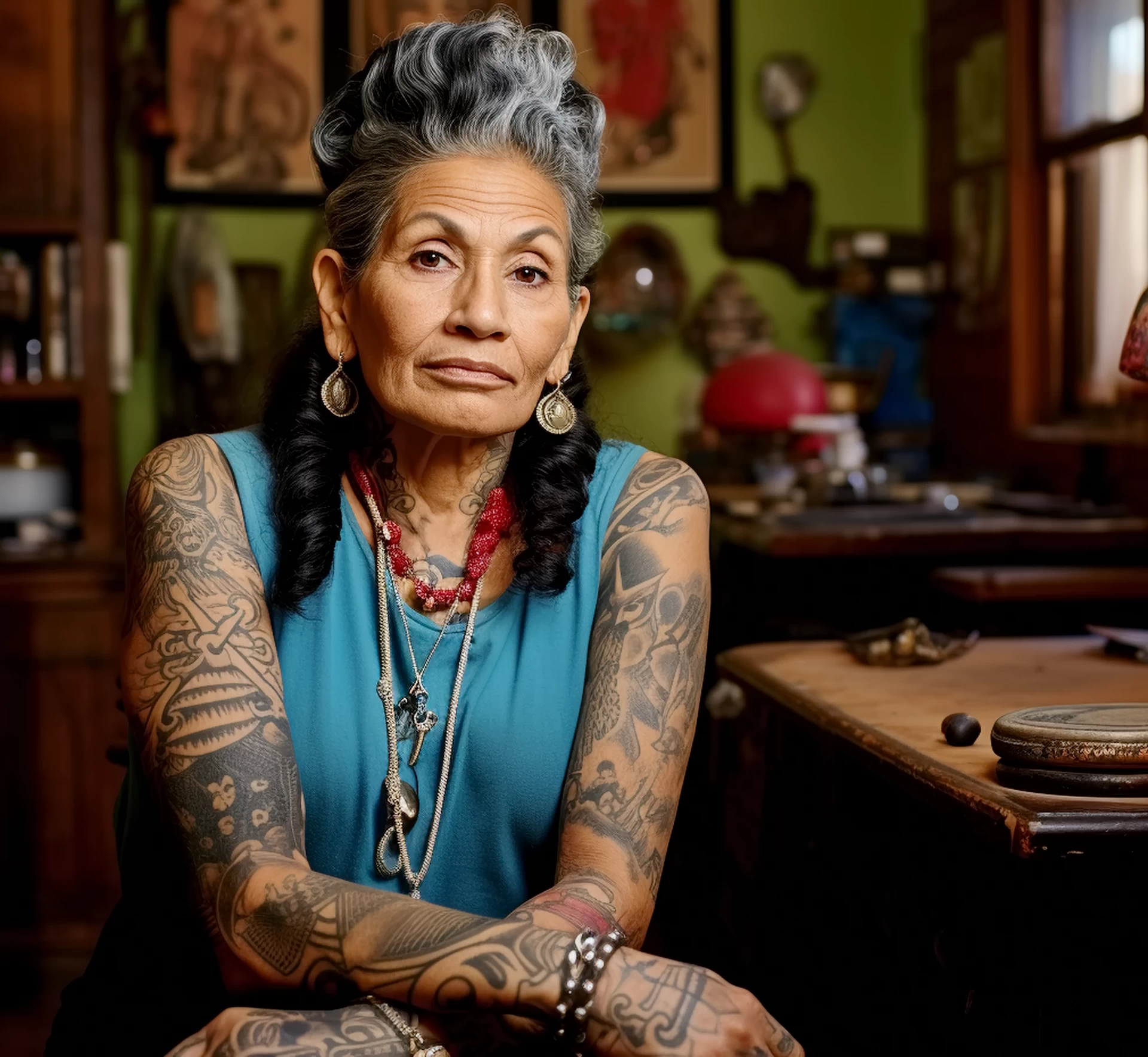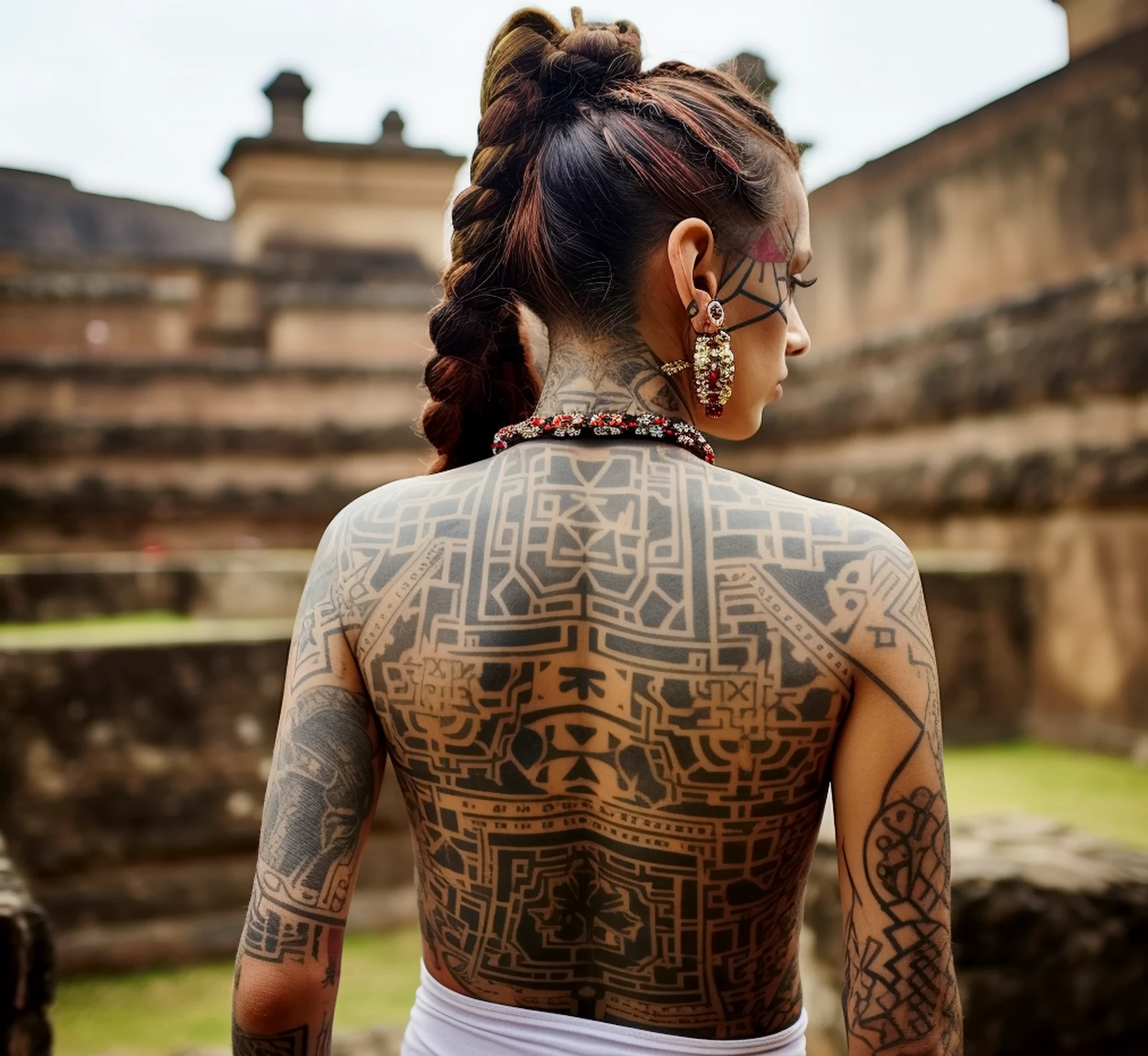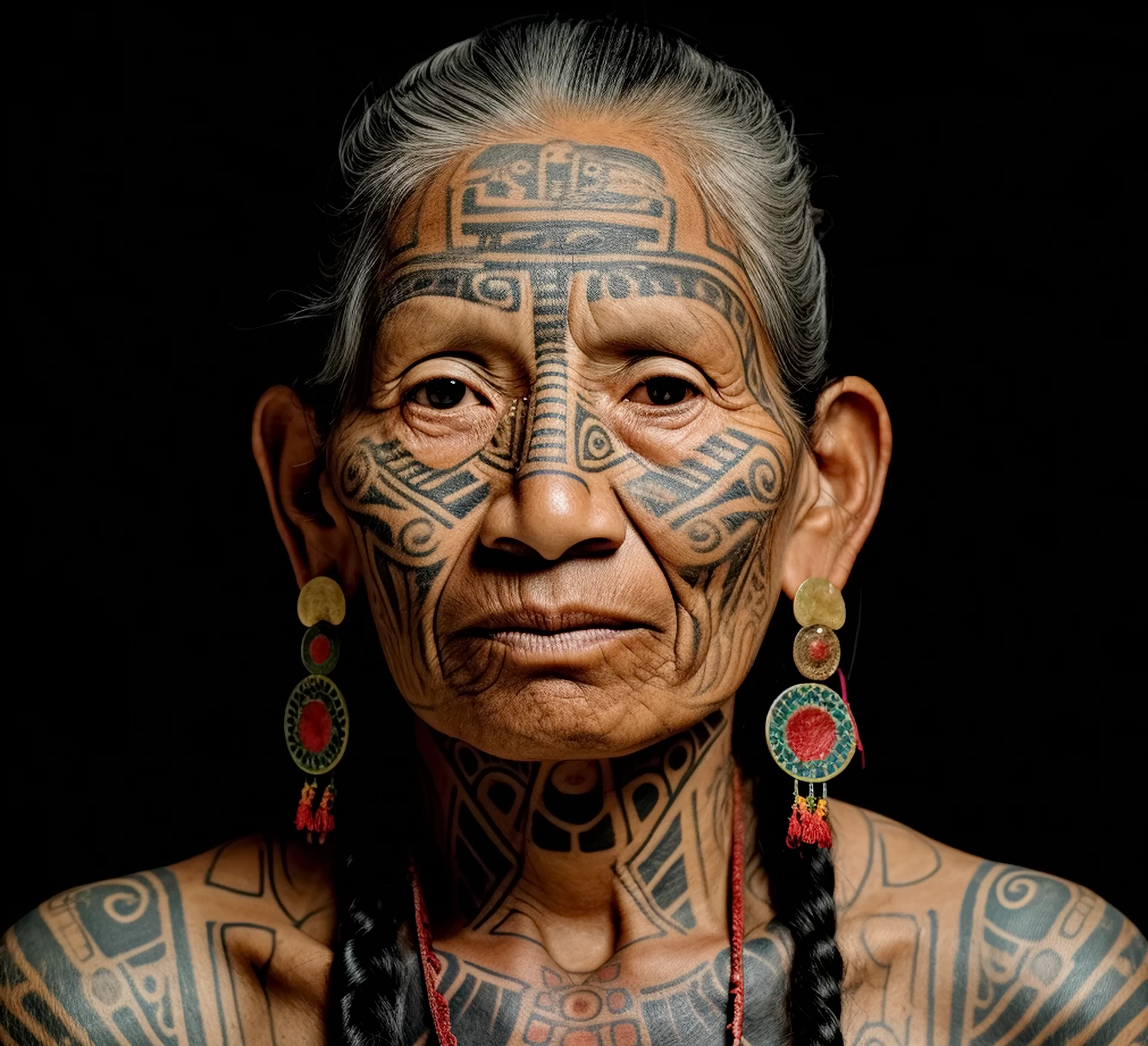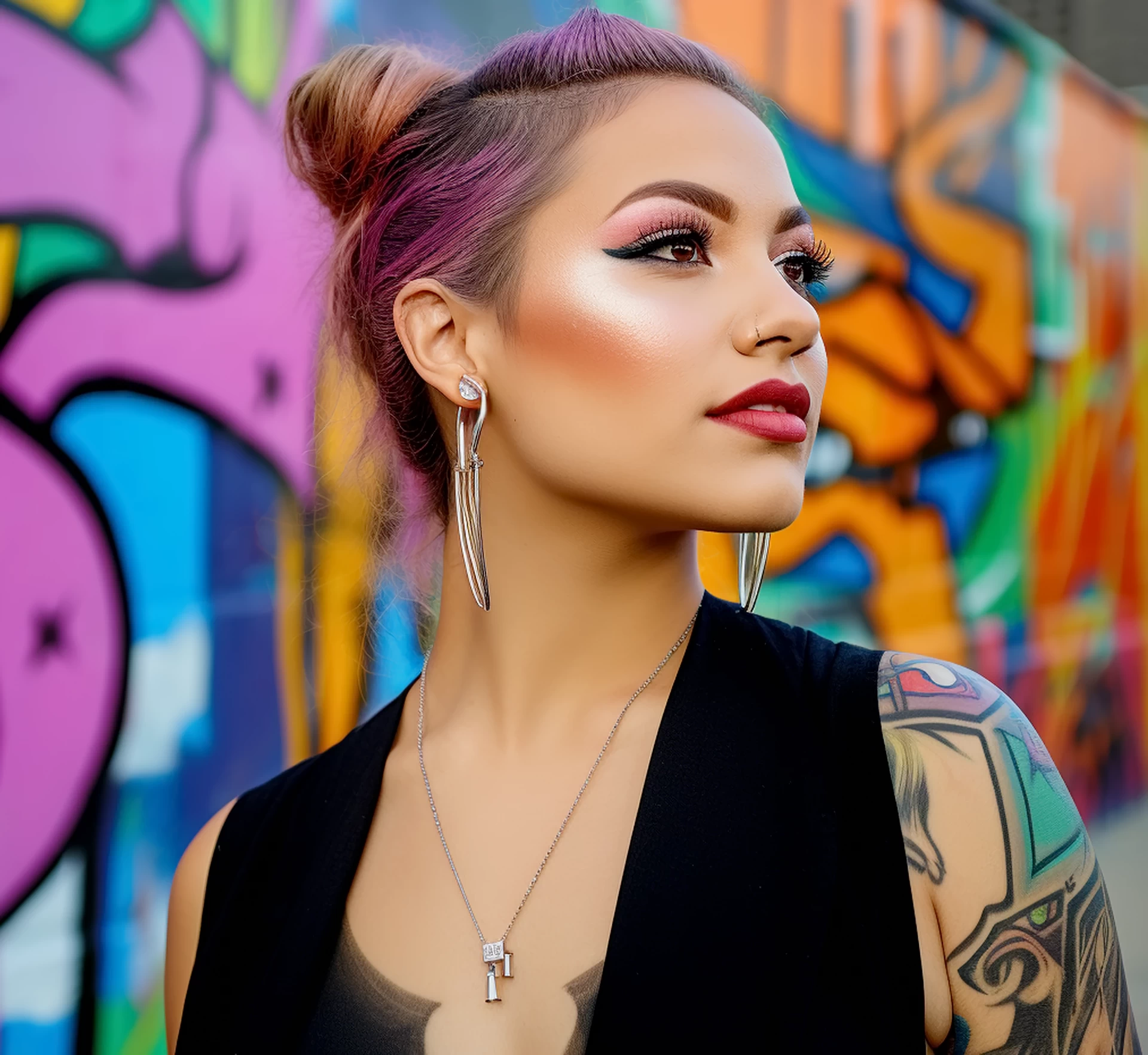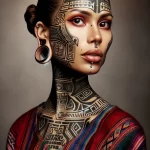Tattoos and piercings have long ceased to be mere trends – they have become expressive elements of culture and individuality. In this article, we will delve into the depths of the millennia-old history of tattoo and piercing art, study their contemporary applications, and their combination with other forms of body modification. From traditional rituals to modern subcultures, we will uncover the diversity of motives and techniques that make each modification unique. Join us to discover how these ancient practices continue to evolve and influence our modern society.
Tattoos and Body Modification – The Beginning
The world of tattoos and body modification spans millennia, encompassing various cultures and eras. This art, once exclusive, was once a purely ritual and symbolic act. At different times and in different corners of the planet, tattoos and body modification carried different meanings: from signs of social status and wealth to sacred symbols that protected their owners or told the story of their entire lives. In ancient Egypt, tattoos were often associated with religion and beliefs, while in many tribes, they served as decoration and distinctive marks. Over time, tattoos and modifications became more accessible and diverse, and their significance retained its multifaceted nature, ranging from purely aesthetic to deeply personal and individualized.
Personal motivations for body modification are as diverse as people themselves. For some, it’s a means of self-expression, while for others, it’s a way to emphasize individuality or commemorate a significant life stage. Cultural reasons are often tied to traditions, where certain forms of body modification can signify reaching a specific age, social status, or even be part of an initiation ceremony. In modern society, the focus shifts towards personal choice and aesthetics, where body modification becomes one of the ways of self-presentation and an integral part of one’s lifestyle.
Combining tattoos with other forms of modifications, such as piercings or ear stretching, opens up even more possibilities for expressing one’s uniqueness. Some individuals combine tattoos with piercings to achieve a specific visual effect, complementing their overall look and creating a harmonious whole. The perception of beauty in the context of body modification is subjective and multifaceted, varying depending on personal preferences, cultural norms, and social expectations. Body modification as an art form offers endless possibilities for each person to create their own unique image by combining different methods and traditions.
Tattoos as the Foundation of Body Modification
In a historical context, tattoos occupy a significant place in numerous traditional societies. Their role varied from ritualistic and status symbols to being used as amulets and signs of tribal affiliation. In ancient Egypt, for example, tattoos were predominantly worn by women, which presumably indicated their status or religious role. Polynesian cultures made tattoos a part of their social code, encoding specific meanings in each pattern. Over time, the perception of tattoos underwent changes, transitioning from strict taboos and stigma in some cultures to a widespread trend and recognition as a form of contemporary art.
With the development of the tattoo industry, both the techniques of application and stylistic directions have evolved. Modern tattoo techniques allow for the creation of high-quality and stylistically diverse artworks. This can range from traditional Japanese irezumi to minimalist geometric patterns. Techniques like shading and highlighting enable the creation of voluminous and realistic images, while the use of color opens up even more possibilities for bringing bold ideas to life.
In modern culture, tattoos have solidified themselves as an integral element of self-expression, serving as a mirror of individuality. Tattoos can tell a person’s story, their interests, beliefs, or life moments. Celebrities and representatives of various subcultures not only contribute to the popularity of tattoos but also influence trends in this art form. Their images are often copied by fans and become part of mainstream culture, thereby modifying public perceptions of tattoos and expanding the boundaries of what is acceptable in body modification art.
Piercing and Its Interaction with Tattoos
Piercing is one of the oldest forms of body modification, with a rich history and its own traditions in various cultures around the world. Its roots trace back to ancient times, where it served various purposes, from ritualistic and religious to symbols of social status and beauty. For example, in many African and American tribes, ear and nose piercing was a common practice symbolizing the transition to adulthood or belonging to a specific social group. As civilization developed, the significance of piercing transformed, and today it is often a means of individualization and body adornment, although in some cultures, its traditional meanings persist.
There are numerous types of piercing, ranging from ear and nose piercing to more exotic forms such as tongue, navel, eyebrow, and even dermal piercing. Each type has its own specifics and often requires special care and attention. However, it’s not just the piercing location that matters; the choice of jewelry is also important, as it should align with personal preferences and lifestyle, as well as consider any potential medical considerations.
Regarding piercing techniques and subsequent care, strict rules apply. Piercing should be done in a sterile environment by a professional using disposable equipment. After the piercing, meticulous care is necessary, including regular cleaning with antiseptics and avoiding trauma to the pierced area, which aids in rapid and safe healing.
Combining piercing with tattoos can be aesthetically pleasing and harmonious. However, when choosing the combination of these two forms of body modification, it’s important to pay attention to the overall design and style so that they complement each other. For example, if the tattoo is done in an ethnic style, traditional types of piercing like nostril or ear piercings can enhance the overall look. It’s essential to remember that both tattoos and piercings are long-term decisions that should harmonize with an individual’s uniqueness and beauty preferences.
Ear Stretching and Other Forms of Modification
Ear stretching, also known as tunnels or plugs, has ancient origins and is associated with diverse cultures worldwide, including ancient civilizations like the Mayans and Aztecs, as well as African and Asian peoples. In these cultures, ear stretching often had associations with ritual art, religious beliefs, and status symbols. In the modern world, ear stretching has become a means of self-expression and part of youth subcultures. Modern methods involve gradual stretching using specialized expanders, allowing for safe size increase according to desired parameters.
Extreme forms of body modification, such as scarification (creating scars), branding, subdermal implants (under-skin implants), and eyeball tattooing, are more invasive and irreversible than tattoos or piercings. These types of modifications often provoke deep emotional reactions and discussions concerning both a person’s psychological state and the social aspects of such decisions. They may be associated with a desire to stand out, express affiliation with a specific group or culture, and can serve deeply personal purposes of self-expression and exploring one’s physical boundaries.
Combining different forms of modification allows for creating unique looks that can reflect a person’s personal history, philosophy, or aesthetic preferences. For example, the synthesis of tattoos and ear stretching can follow a specific theme or symbolism, enhancing the visual impact of each element. This combination can be complemented with piercing, scarification, or even more rare forms of body modification to create a complex, layered image.
Case studies on this topic can showcase real-life examples of individuals who make decisions to combine different forms of body modification. These studies typically include interviews, photographs, and an analysis of the motivations behind their choices. They can reveal both purely aesthetic aspirations and deeper personal or cultural reasons driving a person to embrace such extreme forms of body modification.
Tattoos as the Foundation of Body Modification
Body modification is not only a means of adornment but also a powerful form of self-expression that can hold deep sociocultural significance. However, the perception of modified bodies in society often remains ambivalent. On one hand, in modern urban and multicultural societies, various forms of body modification are becoming increasingly commonplace and even trendy. On the other hand, stigma associated with tattoos, piercings, and other forms of modification persists, especially when it comes to traditional or conservative communities. People with tattoos and other forms of body modification sometimes face misunderstanding, prejudice, and even discrimination.
In the legal realm, different countries adopt various approaches to regulating body modifications. Some countries have strict legislative restrictions that may prohibit certain forms of body modification, such as scarification or branding, citing societal morality norms or concerns for health. Additionally, ethical dilemmas arise in the context of body modification, particularly when it concerns minors or coercion for modifications within cultural or religious contexts.
In the professional sphere, visible tattoos or other body modifications have traditionally been viewed as obstacles to employment and career advancement. In many industries, including banking, law, and healthcare, there are strict appearance standards that may prohibit explicit tattoos or piercings. However, in recent years, there has been a trend towards relaxing these norms, especially in creative fields and the service industry, where individuality and self-expression are increasingly recognized as positive qualities.
The changing perception of tattoos and modifications in the professional world reflects broader social changes related to the democratization of fashion and cultural tolerance. Successful professionals with tattoos, which were once considered unacceptable in the business environment, are increasingly common. This signals a gradual blurring of the lines between personal and professional life and the acknowledgment that one’s ability to perform a job does not necessarily correlate with their appearance.
In Conclusion
The final part of the discussion on body modification opens up perspectives for the future of this ancient yet constantly evolving art. Fashion and culture are ever-evolving, and tattoos and piercings continue to undergo transformations, becoming more integrated into everyday life. Modern technologies are expanding the boundaries of what is possible in the realm of tattoos and body modifications, offering new methods that may be less painful, safer, and provide even more opportunities for self-expression.
Recent advancements include the development of biodegradable inks that can temporarily change color or disappear at the user’s discretion, as well as innovations in dermal implants and interactive tattoos that can interact with various devices. All of this opens up new horizons for those who wish to modify their bodies, without committing to lifelong changes or desiring the ability to make alterations to their appearance.
Speaking of personal identity, it is challenging to overstate the influence of tattoos and other forms of modification on one’s self-perception. For many people, tattoos and piercings are not just adornments but a part of their “self,” a means of externally reflecting their inner world, experiences, and perspectives on life. Therefore, it is crucial to respect each individual’s personal choice, as the right to self-expression and self-identification is one of the fundamental rights of every human being.
(click to see more photos)
It is important to emphasize that tattoos and other forms of modification are not merely a cultural phenomenon but also an essential aspect of self-identification for many individuals. They represent a rich palette of individual and collective values, reflecting the diversity of human stories, cultures, and viewpoints. And judging by the history and contemporary trends, body modification will continue to be a significant part of human culture, highlighting the uniqueness of each person while simultaneously connecting people through shared cultural and aesthetic practices.
